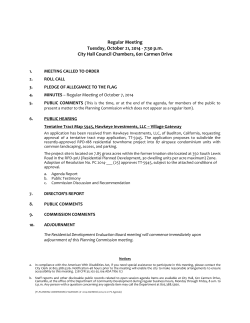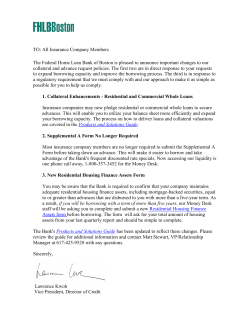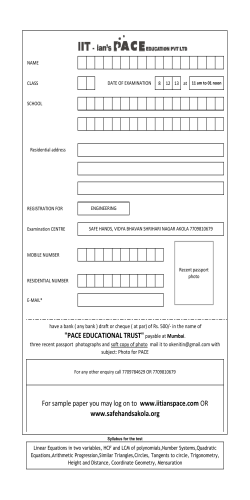
Solar PV in the Caribbean Opportunities and Challenges
Solar PV in the Caribbean Opportunities and Challenges Also See: Latin America PV Playbook The Latin America PV Playbook explores the budding Latin American PV Market, specifically Mexico, Brazil, Chile, Central America, and the rest of South America. The Playbook has three distinct deliverables: the Solar Essentials Report, the Quarterly Market Update, and the Project Database. Solar Essentials Report • • 100 slides, delivered annually Fundamentals, demand drivers and opportunities Quarterly Market Update • • 100 slides, delivered quarterly Market history, competitive landscape, forecasts Project Database • • Excel workbook, delivered quarterly 600 megawatt-scale projects and growing 2 Background and Methodology Background • • • • • • • There is a lack of data on the solar energy market in the Caribbean at both the regional and national levels. Although the Caribbean PV market remains small and fragmented, PV development is now occurring in a large number of different jurisdictions. There is a clear need to collect basic data on the Caribbean PV market in order to support strategic decision making by regulators, legislators, utility staff, the solar industry, international organizations, and other stakeholders. This study summarizes the results of a survey of the Caribbean solar photovoltaic (PV) conducted jointly by Meister Consultants Group, Inc. (MCG), and GTM Research. The survey gathered data on the Caribbean PV market through in-depth interviews with regional solar energy installers and industry stakeholders. In total, ~30 companies covering 15 distinct jurisdictions were interviewed. The results of these interviews were supplemented by desk research and benchmarked against GTM Research PV industry databases. In particular, this draws on analysis conducted for the Latin America PV Playbook, a quarterly research product available from GTM Research. The data gathered included background information on each PV company (e.g. installs per year, activity in different market / market segments), installed system cost by segment, range of prices paid for module during the last six months, brands of inverters and modules, typical customer payment method, typical financing terms, and stakeholder views on barriers to market development and the current policy landscape. Future research will include updates of this data, coverage of more jurisdictions, the levelized costs of electricity (LCOE) ranges in different countries, and strategies to improve communication and best practice sharing among the regional industry. Report Structure • This report is structured to provide data in a clear and readily accessible format. The report is organized as follows: – Key findings on cost data, policy, and finance – p.4 – 8 – Summary of installed cost data – p. 9 – 12 – Overview of module pricing and equipment brands p. 13-14 – Summary of customer financing – p. 15 – Snapshot of policies for distributed generation p. 16-17 About the Team • • • MCG is an international consulting company focusing on sustainable energy and climate policy and markets. MCG has worked on energy transition strategies across the Caribbean in partnership with governments, utilities, and international organizations. GTM Research, a division of Greentech Media, provides critical and timely market analysis in the form of research reports, data services, advisory services and strategic consulting. GTM Research's analysis also underpins Greentech Media's webinars and live events. This report builds on a parallel effort to create a database of solar energy installers in the Caribbean in partnership with CARICOM, and with support from the Clean Energy Solutions Center. 3 Map – Survey Respondents Bahamas Dominican Republic Virgin Islands Barbuda Puerto Rico Antigua Guadeloupe Dominica Martinique St. Lucia St. Vincent Jamaica Barbados Grenada Tobago Trinidad 4 Key Findings and Analysis 1. There is a wide range of installed system costs across all market segments, especially in the residential market – Example: Jamaica had residential pricing ranging from $2.50/W to $8.00/W, with costs as low as $1.50/W in Antigua. – Key Drivers/Constraints: • Regional heterogeneity: The Caribbean is composed of multiple countries, with very different conditions influencing costs. • Lack of transparency/competition: Limited competition among small numbers of installers in some countries, less comparative shopping and fewer bids solicited on individual projects by buyers, and a lack of market data. • Local tariffs: Tariffs, duties, and taxes vary significantly from country to country. • High acquisition and transaction costs: Most businesses do not have a steady pipeline of new business, leading to increased time spent on generating new leads. • Other soft costs: Administrative costs, including interconnection, are expensive and time consuming in some countries. • Price Sensitivity: For higher income customers buying with cash equity, quality/environmental concerns can influence purchase decisions and trump price. • Lack of experience: Although labor costs are lower, individual projects often take longer to complete, with low total staff numbers. More experienced companies are offering lower costs. 5 Key Findings and Analysis 2. The commercial segment is exposed to the most competitive pricing – Example: Commercial system costs averaged $2.88/W, with a high of $4.00/W in Martinique and a low of $2.00/W in Barbados. – Key Drivers/Constraints: • More competition/transparency: Commercial entities tend to solicit multiple bids and have a broader reach for attracting companies to their projects. • Economies of scale: The economics of commercial projects, compared to residential, drive down costs in several ways. Bulk supply enables direct sale opportunities at cheaper $/W price for modules and inverters. Solar companies that can execute larger installations often have more experience and can complete projects more quickly (hours/watt). • Financing: Commercial entities may have better access to capital, and are more likely to leverage debt to lower overnight installed costs. 6 Key Findings and Analysis 3. Utility-scale installed costs will drop over time, but are still being inflated by early-market factors – Example: System pricing average $2.76/W, which was close to the commercial average of $2.88/W. – Key Drivers/Constraints: • Puerto Rico as an outlier: High interconnection costs and increased counterparty risk from the utility create conditions for some of the higher-cost projects in the region, dragging the average upwards. • Technological experimentation: Many utility-scale pilot projects in Latin America incorporate different technologies and equipment for testing. Eventually, larger projects may drive down costs through the use of single technologies, streamlined development processes, and larger financial players. • More competition/transparency: Utilities and large commercial entities tend to solicit multiple bids and have a broader reach for attracting companies to their projects. 7 Key Findings and Analysis 4. The policy regime in the region remains dynamic; some countries have no policies, whereas others are in the midst of policy transition – – Example: Half of the countries surveyed have policies in place to support distributed generation. However, transitions from net-metering to net-billing (e.g. Grenada), market caps (e.g. Antigua and Barbuda), and uncertainties surrounding the interpretation of import duty exemptions (e.g. Jamaica), have been cited by regional companies as policy challenges. Key Drivers/Constraints: • Grid integration: Utilities have expressed concerns about the intermittency of new PV installations. This is particularly true of larger projects, but has also led to caps on existing distributed generation programs. • Market architecture: By virtue of their size and market history, many islands have a vertically-integrated monopoly that excludes direct sale. Utilities have a strong incentive to avoid opening electricity laws to review and amendment. • Utility compensation: Utilities rate-of-return is premised on electricity bill payments, which are undercut by self-generation or net metering. • Policy structure: Incentive structures have failed to provide strong enough value propositions for PV in some countries. For example, net-billing programs commonly offer a lower tariff for exported energy than the retail rate – which may not be sufficient to support PV development.. • Political risk: Utilities have significant political influence in the region, and utilities may seek to constrain PV development if incentives are not aligned 8 Key Findings and Analysis 5. Cash equity is still the dominant form of payment – and debt is expensive – Example: Financing terms typically require collateral, have interest rates ranging from 7% to 20% and tenors are typically 3-5 years. Few lenders offer tenors over 10 years. High costs of capital and short debt terms constrain market growth and weaken PV economics. – Key Drivers/Constraints: • Local markets: Smaller financial markets with conservative institutions can charge higher rates due to lack of familiarity with technology (and lack of competition). • Policy risk: The policies underpinning PV growth are often intransparent or exposed to changes that negatively impact the underlying economics of the project. These uncertainties can raise the cost of capital. • Lender knowledge: Lenders are often unfamiliar with existing credit windows for RE finance, real and perceived risks, and investment payback. • Credit reporting: The credit reporting regimes in some markets is underdeveloped. With less access to the past financial histories of potential customers, lending rates are higher due to higher risk of default – or constrained to a smaller segment of the market for which that information is available. • Political/country risk: Some jurisdictions have a high level of political or country risk, compounded by structural economic challenges, which place a premium on lending. 9 10 Highest Jamaica $8.00/W Lowest Antigua $1.50/W Highest Martinique $4.00/W Lowest Barbados $2.00/W Puerto Rico $5.26/W Lowest Average Average Average $3.20/W $3.85/W Highest Residential Commercial $2.69/W Utility-Scale Key Statistics by Segment Martinique $2.00/W Distributed Generation System Pricing 11 Utility-Scale System Pricing 12 Utility-Scale System Pricing Key Indicators 13 Module Pricing • • Individual country’s taxes/duties and component provider have the largest influence on module pricing in the Caribbean Chinese companies have the lowest CIF pricing, at between $0.60/W and $0.70/W, with U.S./Japanese-made panels as high as $0.90/W to >$1.00/W 14 Module/Inverter Survey Brand Recognition Inverters PV Modules 15 How do Customers Pay for PV Systems? Bahamas Barbados Grenada Jamaica Martinique; Guadeloupe; St. Martin USVI Rate Tenor 7% 7-9% 8% 9% Residential: 5-10% Larger: 0-5% 2.99% + lender fees (7.5% 17%) N/A Residential: 7-10 years N/A Residential: 3-5 years Residential: 5-10 years Larger: 10-15 years Residential: 12 years • Most PV systems are still purchased with cash equity • Debt is available in certain jurisdictions, but often on a limited basis – Low cost, long-term debt is still largely unavailable – Most countries that do offer debt have rates over 7%, and tenors under 15 years – Most debt offerings do not cover the useful life of a system, and are priced at a level that extends payback periods considerably 16 Policy Overview of Distributed Generation Supportive Policy No Supportive Policy Aruba Barbados Bermuda Cayman Islands Curaҫao Dominica Dominican Republic Grenada Guadeloupe Jamaica Martinique Puerto Rico St. Kitts Anguilla Antigua & Barbuda Bahamas Belize Bonaire British Virgin Islands Guyana Haiti Montserrat Nevis St. Lucia (Mixed) Trinidad & Tobago Turks and Caicos Islands St. Vincent & the Grenadines U.S. Virgin Islands • • 15 countries have some form of supportive policy for distributed generation, including net billing, net metering, and/or interconnection processes. 13 countries do not have supportive policies in place. USVI, Antigua & Barbuda, Jamaica, Barbados, and Grenada were all mentioned by respondents as having programs cancelled, changed, or under review due to hitting capacity caps 17 Table of On-Site Generation Policies Country Barbados Cayman Islands Grenada Jamaica St. Vincent & the Grenadines USVI Policy Mechanism On-site Consumption? System size cap Program cap Compensation structure Compensation amount (USD) Renewable Energy Rider Yes** 1.5x the customer's current avg. usage up to a max. capacity of 150kW 9MW • 1.6x the Fuel Clause Adjustment • Under 2kW: Cash payment for metered output of system. Over 2 kW: Cash payment for 100% of power CORE Tariff Yes* Residential: 20 kW, or peak load 2 MW Cash payment for 100% of power ~USD $0.47/kWh for 20 years Renewable Standard Offer No Commercial: 100 kW, or peak load 2.5% of annual electricity demand Cash payment for 100% of power USD $0.17/kWh for 10 years, or avg. avoided fuel cost for previous 12 months Net Billing Standard Offer Contract Yes Residential: 10kW, Comm.: 100kW 2% of JPS’ highest system peak Cash payment for metered output of system Short-run avoided cost of generation VINLEC Net Billing/FIT policy Yes*** • Max. of 5% of peak demand on certain islands • EC $0.45/kWh Feed-In Tariff No Net Metering • Yes Single phase: 17kW Three phase: 50kW 10 – 500kw • • • 15MW (both programs in total) Residential: 20kW Comm.: 100kW Public Facility: 500kW • Residential: Cash payment for metered output of system. Commercial: Cash payment for 100% of power Cash payment for 100% of power Percentage discount to the avoided cost of the Utility Generation credited to the customer-generator’s utility account Retail rate * Power can be consumed on-site but it does not offset retail electricity purchases. Customer pays the utility retail rate for all electricity consumed. ** Systems up to 2kW may choose whether to use a Buy All/Sell All or a Sale of Excess arrangement; system owners over 2kW may only enter into a Buy All/Sell All agreement *** Residential systems may consume on-site; commercial systems must utilize a Buy All/Sell All arrangement 18 Contact GTM Research Sales - Justin Freedman, freedman@gtmresearch.com Analyst - Adam James, james@gtmresearch.com Meister Consultants Group Wilson Rickerson, wilson.rickerson@mc-group.com Caroline Palmer, caroline.palmer@mc-group.com Christina Becker-Birck, christina.becker-birck@mc-group.com
© Copyright 2025












